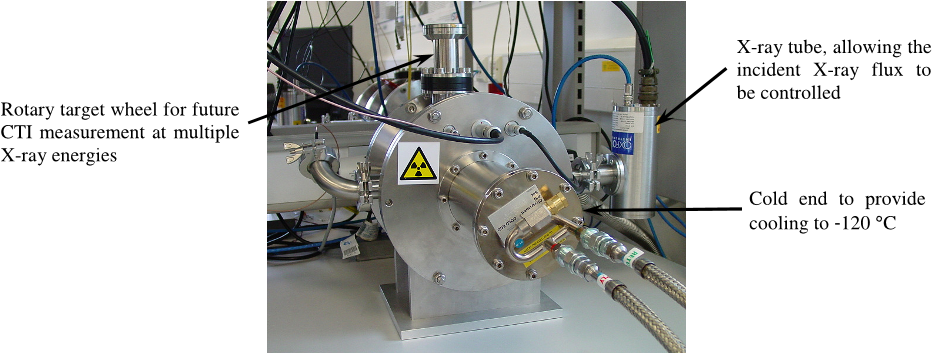




Did you find this useful? Give us your feedback




![Fig. 1. A photograph of the p-channel CCD47-20 [a] and the n-channel CCD02 [b]](/figures/fig-1-a-photograph-of-the-p-channel-ccd47-20-a-and-the-n-3r85m3a6.png)











28 citations
11 citations
7 citations
...On the other hand, there is also mounting evidence th a t p-channel devices may have some other im portant advantages in term s of radiation damage performance in space environments, due to the differing nature of traps present in n-type as compared with p-type silicon [36]....
[...]
6 citations
..., [22, 23, 24]) instead of the more conventional n-type doped buried channel....
[...]
3 citations
331 citations
...It is essential for a space mission that the selected detector meets the performance requirements over the mission duration, accounting for performance loss due to the space radiation environment [1]....
[...]
189 citations
...krad, similar to that found in the p-channel CCD02 [9] and other e2v n-channel CCDs [10]....
[...]
...krad at 21 °C, was found to be comparable with other e2v n-channel CCDs [10]....
[...]
133 citations
...cm, the results are comparable to those found by Srour [6], Bebek et....
[...]
...The activation energy was calculated to be 0.61 eV un-irradiated, 0.62 eV irradiated with 4.07×1010 protons.cm-2, and 0.63 eV irradiated with 1.35×1011 protons.cm-2, the results are comparable to those found by Srour [6], Bebek et. al....
[...]
...Srour demonstrated that a trap with an activation energy of 0.63 eV, attributed to the divacancy, is responsible for the temperature dependence of dark current associated with thermally generated charge [6]....
[...]
...63 eV, attributed to the divacancy, is responsible for the temperature dependence of dark current associated with thermally generated charge [6]....
[...]
56 citations
41 citations
...krad, similar to that found in the p-channel CCD02 [9] and other e2v n-channel CCDs [10]....
[...]
...The CCD02 is a front illuminated device, with an image format of 385 by 578 with 22 µm square pixels, illustrated in Figure 1b....
[...]
...Results found using a CCD02 characterised using comparable voltages, timings, and X-ray flux [4] were used to provide the n-channel comparison....
[...]
...Based on the fits to the data the increase after irradiation at 21 °C (at this temperature the device was saturated i.e. ADC max out) was calculated to be ~1.4 nA.cm-2.krad-1, similar to that found in the p-channel CCD02 [9] and other e2v n-channel CCDs [10]....
[...]
...The parallel CTI measured at -90 °C is illustrated in Figure 8, with trend lines showing the base CTI pre-irradiation and the increase in CTI post-irradiation summed together to illustrate the effect of increased proton fluence on CTI at -90 °C. Data from an n-channel CCD02 [4] is included in Figure 9, the difference in the base CTI between these p-channel devices and a typical n-channel is clear....
[...]
Future work will include completing the testing with the n-channel CCD47, measuring the parallel CTI as a function of temperature as only the n-channel device irradiated at KVI is available for testing. Despite the initial poor CTI the large improvement in tolerance to radiation induced CTI still makes these devices, at their current level of performance, suitable for use in hostile radiation environments indicating that p-channel devices will have a large part to play in the future of CCDs in space. The potential mirror will also be developed to improve its noise performance.